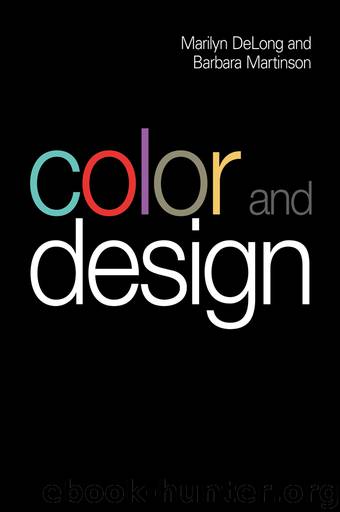Color and Design by DeLong Marilyn; Martinson Barbara; & Barbara Martinson

Author:DeLong, Marilyn; Martinson, Barbara; & Barbara Martinson
Language: eng
Format: epub
Publisher: Bloomsbury Publishing
Published: 2013-05-02T16:00:00+00:00
– 8 –
Signaling Protection: The Use and Function of Color in Firefighter Clothing
Jessica F. Barker, Lynn M. Boorady, and Susan P. Ashdown
Chapter Summary. Firefighters wear protective clothing in the form of turnout gear in order to effectively perform their required duties. Color variations in turnout gear are used by firefighters to determine new members, rank, and/or a particular fire company; however, there is no uniform understanding of the use of color in turnout gear. In this study, firefighters preferred tan gear over other colors. Certain colors are preferred by individual firefighters based on functionality—ease in identifying soil or damage, perception of reflecting heat, and even the perception of level of experience. However, no studies have been performed that indicate that a particular color functions better than other available colors for turnout gear, and the National Fire Protection Association (NFPA) does not recommend any particular color be used for turnout gear. Further studies are recommended in order to more fully understand the use of color in turnout gear.
Firefighters traditionally used their protective clothing as a last defense from fires, but as the structures and materials of buildings evolve, firefighters are increasingly fighting fires from inside rather than outside of buildings (Whitehead 2000). This shift in firefighting methods now puts firefighter gear as the first line of defense. It is critical that firefighter gear be as functional as possible, for both the firefighters wearing the gear and the public responding to the firefighter wearing the gear. Color is a key element of firefighter clothing for perceptual meaning for both the firefighter and the public and to fill functional needs of visibility and identification while fighting fires. Black and tan, as shown in Plate 16, are two common colors for turnout gear. In this example, two firefighters from different stations are performing an extrication exercise. Plate 17 shows yellow turnout gear, another common color, worn during a live fire exercise.
Each firefighting station, whether a municipal department of professional firefighters, or a volunteer station, chooses its turnout gear colors individually, so there are vast differences in gear colors chosen from department to department. The color of firefighter gear chosen by a department may reflect historical imperatives of the department and the overall firefighting occupation. Fire departments and individual firefighters spend a substantial amount of money procuring turnout gear. Economic considerations often inform choices, especially for smaller volunteer fire departments. In these circumstances, more emphasis is usually placed on cost when departments select color of firefighter gear, rather than other factors such as department traditions. In situations where economic considerations are not as critical, specific colors may be preferred based on departmental traditions and occupational culture. Yet no studies or recommendations for manufacturers and fire departments were found to aid firefighters in the selection of appropriately colored turnout gear. The aim of this study is to identify how the color of firefighter gear can affect the gear’s function, as well as possible impacts of color on the wearer’s perceptions of the gear and the viewer’s perceptions of the firefighter wearing the gear.
Download
This site does not store any files on its server. We only index and link to content provided by other sites. Please contact the content providers to delete copyright contents if any and email us, we'll remove relevant links or contents immediately.
| Decorative Arts | Design History & Criticism |
| Furniture Design | Industrial & Product Design |
| Interior & Home Design | Jewelry Design |
| Textile & Costume |
POP by Steven Heller(3230)
Japanese Design by Patricia J. Graham(3000)
The Power of Broke by Daymond John(2773)
Architecture 101 by Nicole Bridge(2705)
Indistractable: How to Control Your Attention and Choose Your Life by Nir Eyal(2282)
Fusion 360 for Makers by Lydia Sloan Cline(2232)
Actionable Gamification: Beyond Points, Badges, and Leaderboards by Yu-kai Chou(2071)
Origami Art by Michael G. Lafosse & Richard L. Alexander(2009)
Batik by Rudolf Smend(2007)
Homebody by Joanna Gaines(1980)
Whiskey in a Teacup by Reese Witherspoon(1875)
Feng Shui by Stephen Skinner(1855)
Worn in New York by Emily Spivack(1837)
Austin Kleon by Steal Like an Artist(1820)
Simple Gatherings by Melissa Michaels(1785)
Don't Make Me Think, Revisited: A Common Sense Approach to Web Usability by Steve Krug(1781)
Hygge: The Danish Art of Happiness by Marie Tourell Søderberg(1646)
The Joy of Hygge by Jonny Jackson(1616)
The Laws of Simplicity by John Maeda(1517)
